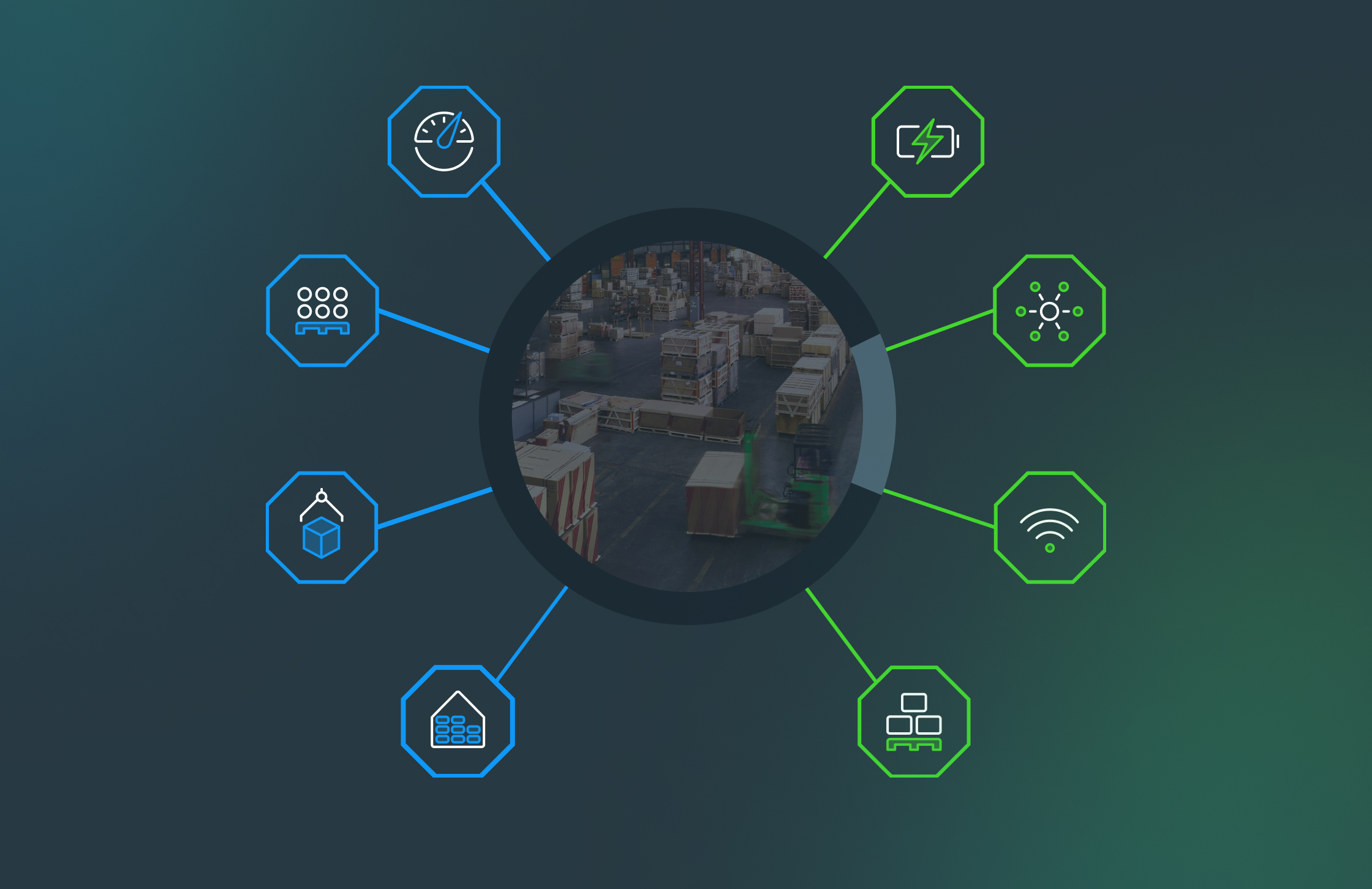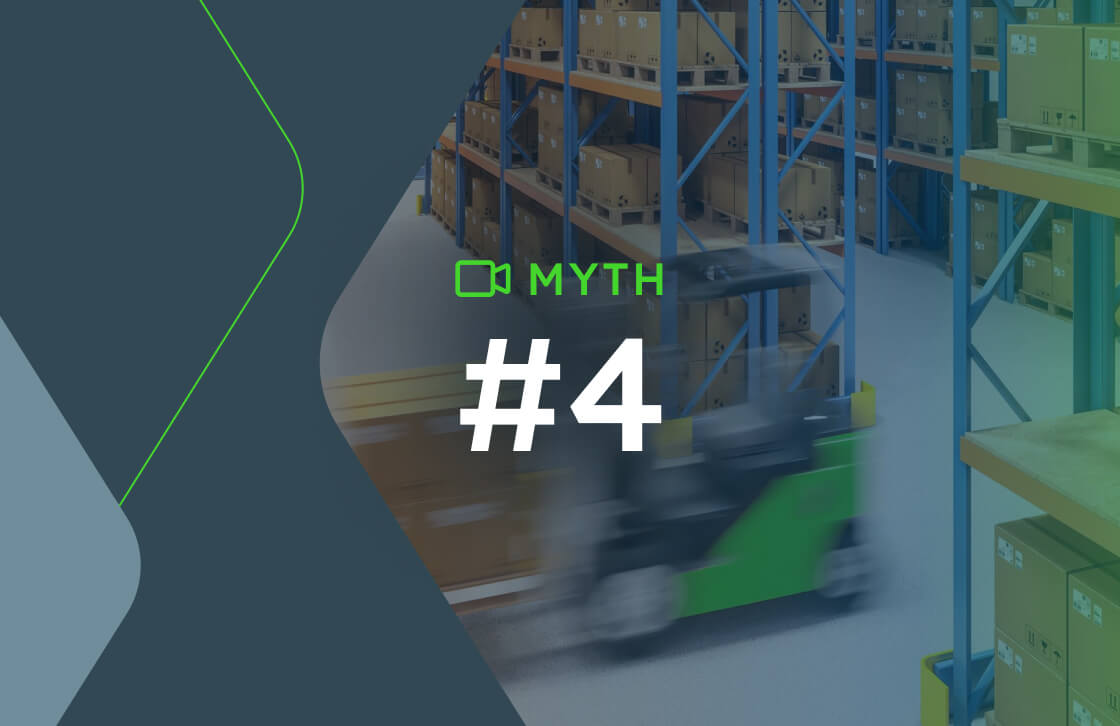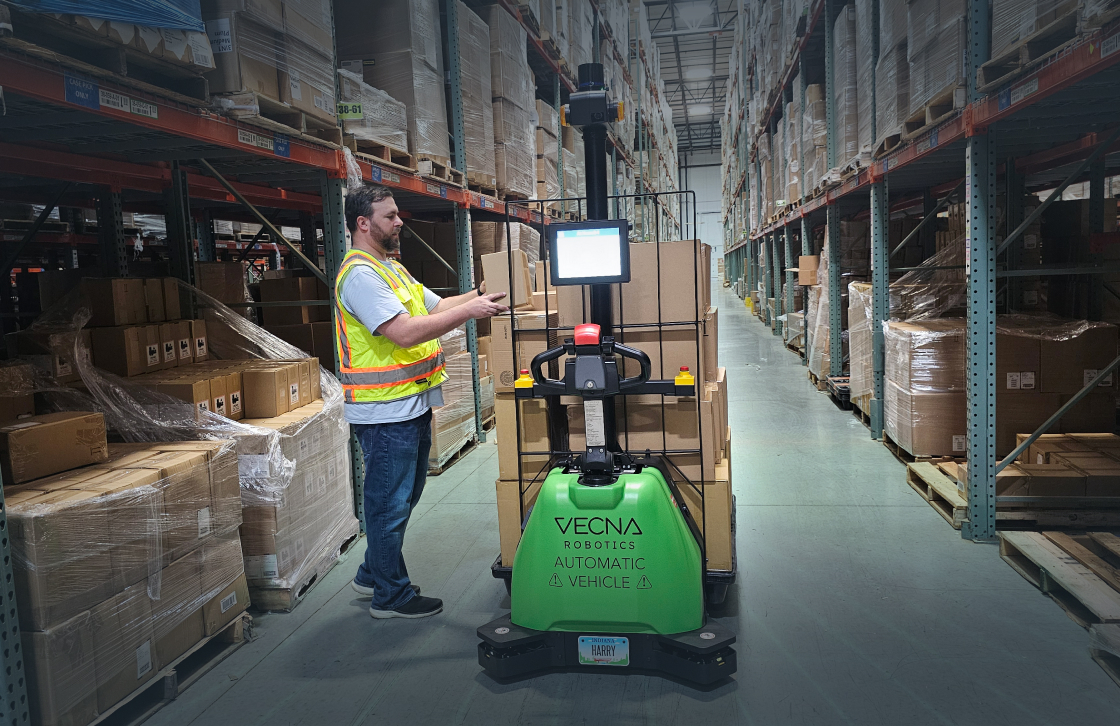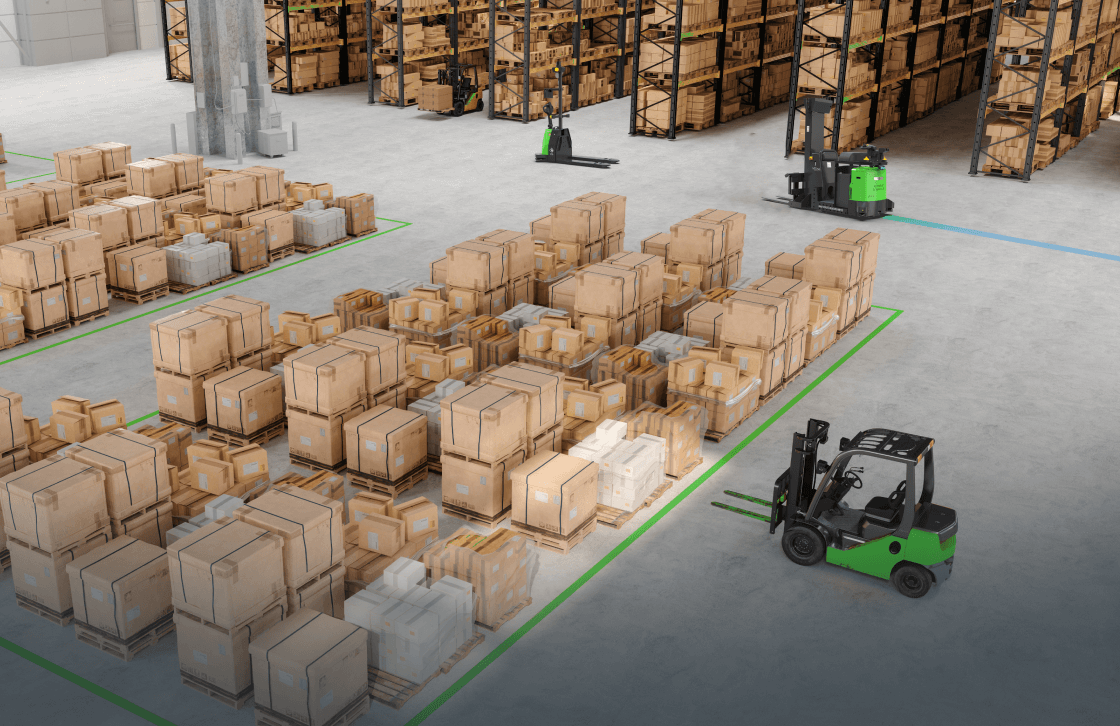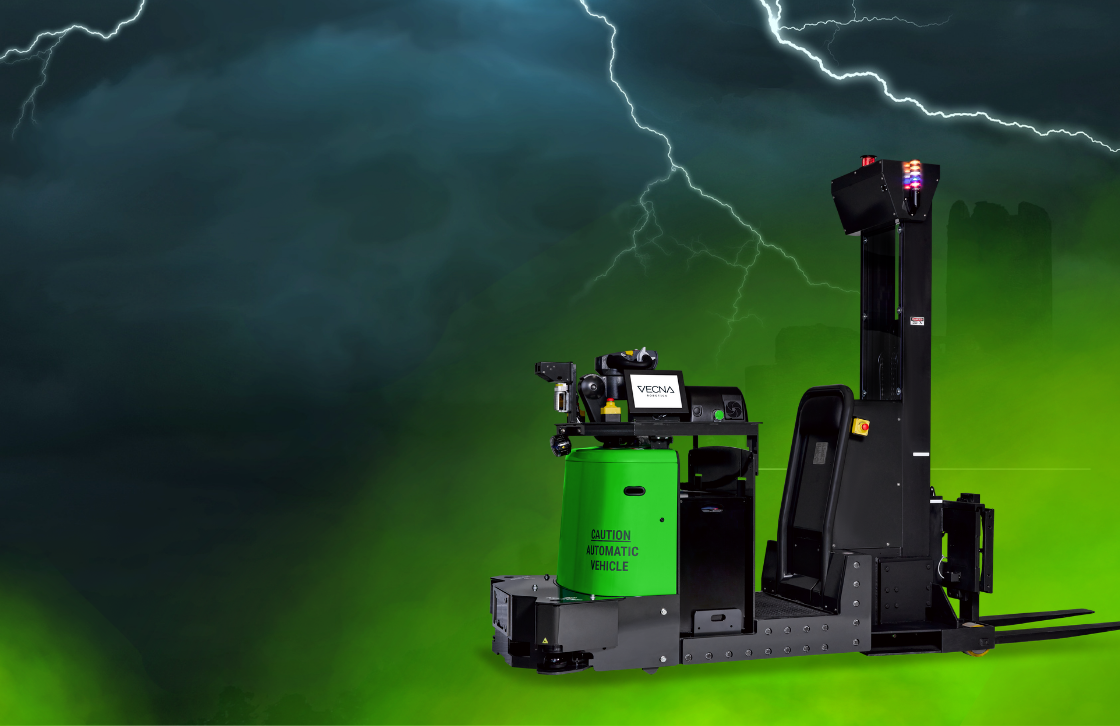The material handling industry has been plagued by labor shortages and high turnover rates, while simultaneously struggling to react to e-commerce demand reaching all-time highs. To address these problems, leading facilities in the industrial sector are increasingly turning to self-driving equipment like Autonomous Mobile Robots (AMRs) to increase adaptability and throughput. Listen to the recent Advanced Manufacturing Now podcast to hear from Jeff Huerta, VP of Sales at Vecna Robotics, about how profitable facilities are using intelligent autonomous equipment to not only outlast, but come out ahead in turbulent conditions. Learn why autonomous vehicles like self-driving forklifts, pallet movers, and tuggers are more effective than ever before in creating a competitive advantage in manufacturing, distribution and warehousing.
How Self-Driving Forklifts Reduce Labor Shortage Strain
Over 4 billion pallets are moved every day on a global scale, with a good deal of that being non value-added travel. This is a less-than-ideal use of available labor. “Let the robot do this work and move your labor to other areas,” says Huerta, “That’s where we see the most success.” He makes note of how the material handling labor shortage is not specific to forklift drivers, although these roles do require an amount of training and experience that is more prohibitive to the hiring process. The labor shortage is affecting roles across the operation – from floor management to quality control. “Non-value-added travel should be automated,” says Huerta, “We need to put available labor in the areas where thinking is needed.”
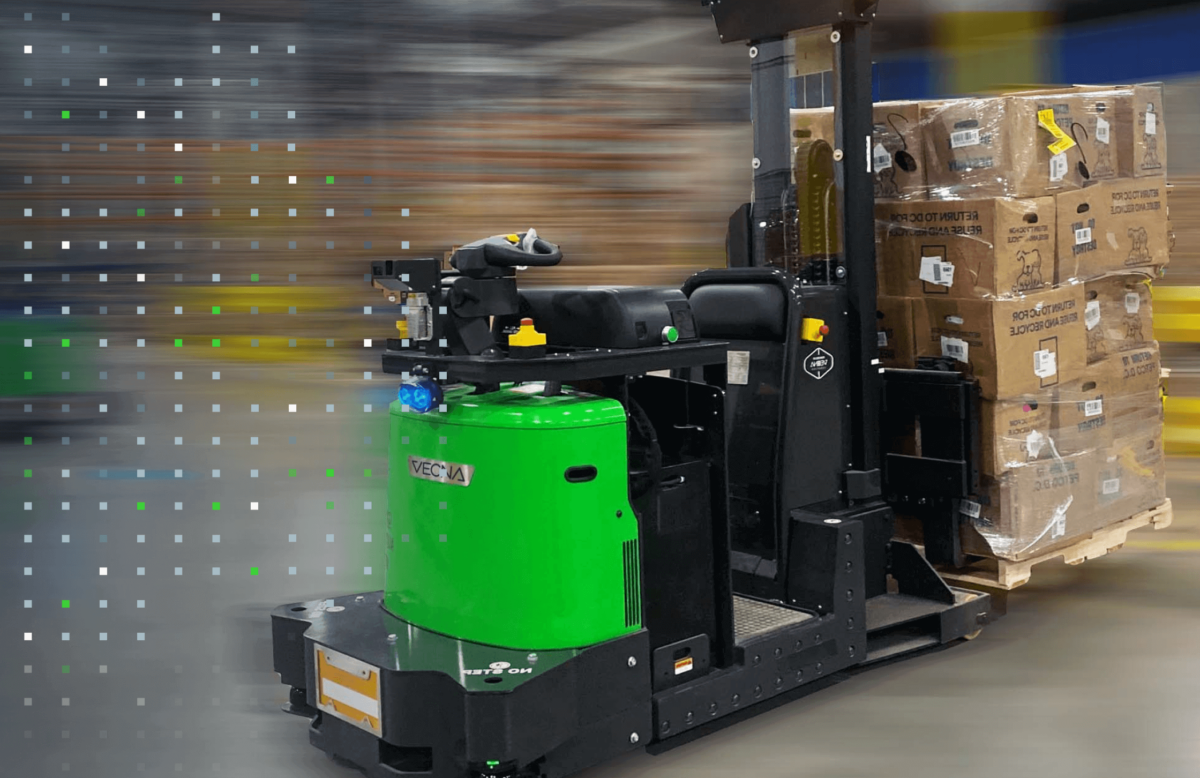
The labor shortage does not only affect large companies. “Everybody has this problem, there’s a lot of new companies that have the same problem as these Fortune 500 companies. They may even have it worse,” Huerta explains. Vecna Robotics has experience working with customers of all sizes, deploying both large fleets and individual robots across the country. Companies both small and large can see major returns from automating workflows with the right technology.
When asked if the size of the company matters in terms of automation, Huerta addresses the common misconception that exists. “It’s not the company’s size, it’s the application; There’s home runs and there’s base hits.” Huerta analogizes, explaining that a home run would be a robot transporting a pallet across a mile-long facility, and a base hit would be moving materials a smaller distance, but perhaps at greater frequency. In the end, both applications can result in a win.
Choosing the Right Automation Technology
The key to meeting demand in this labor crisis is not as simple as putting any self-driving forklifts on the facility floor. The essence of the solution is adaptability and efficiency. Choosing the automated technology that is the best able to meet these goals and produce the highest metrics is the key to holding a competitive advantage.
Over the past few decades, automated machines in facilities have vastly changed. Automated Guided Vehicles (AGVs) were once the pinnacle of futuristic, automated technology, using installed magnetic strips to run routes like a train on a railroad track. This installation process is lengthy and requires disruptive and expensive infrastructural updates. With AMRs, this is not the case. Huerta describes the ease of deployment to customers in one brief sentence: “It’s an engineer, their laptop, and the robots themselves.”
Not only is installation easy and mess-free, but the vehicles’ applications have advanced significantly. Rather than running laps on a track, Vecna Robotics’ self-driving forklifts are able to “work just like operators work”, Huerta explains. Vecna Robotics’ intelligent AMRs make use of continuous-learning capabilities and cutting-edge software that calculates and assigns the most efficient routes to each truck. They use intelligent analytics to navigate effectively in dynamic environments – communicating traffic patterns to one another so that more efficient routes can be assigned.
With Pivotal, Vecna Robotics’ orchestration software, the robots are monitored in real-time, all the time. “This traffic management is what makes our robots very efficient, and makes sure we’re meeting and exceeding customer expectations,” says Huerta. It is this advanced level of technology that enables these self-driving forklifts to be a viable solution for the labor shortage, showing incredible efficiency that reduces the stresses of training and hiring new individuals.
Automation that Scales with Production is Key to Sustained Success
The intelligence of the vehicles is vastly important, but scalability is a determining factor in successful automation. Both the vehicles and the technological capabilities need to scale easily so that the company and fleet can expand without significant growing pains. Vecna Robotics’ AMRs can be installed with varying degrees of accompanying automated processes.
When asked about how comprehensive the automation process is, Huerta says “It’s flexible – It’s meant to be, and it has to be”. Vecna Robotics’ technology is designed to grow with the customer. “We understand that customers’ situations change. It all depends on where you start and where you want to finish.”
Huerta describes low-level integration, which allows robots to be deployed from tablets with assigned tasks, as well as “conveyor-belt generated demands.” In this higher-level integration, the robot can pick up a pallet from a conveyor system, tell the Warehouse Management System (WMS) that it has that pallet, and ask where it should be transported. This use is one example of how processes can be automated, now or later on in production as demand grows and more capabilities are needed.
Self-Driving Forklifts Offer Benefits Beyond Labor Addition
Huerta leaves the listener with advice about how to approach automation as an implementable strategy. He begins by saying that many people think automation is too new, that it’s not right for them, and that they’re not ready to automate. “This is not true, anyone can automate,” Huerta says. With Vecna Robotics’ resources, it’s easy to explore how automation can help with not only the labor shortage but a litany of other obstacles. If you have those mundane, dirty, and demeaning tasks – self-driving forklifts can take these tasks on and allow for necessary labor reallocation, while also increasing safety and throughput. “We can work together to meet your goals” says Huerta.
See Vecna Robotics’ Self-Driving Forklift in action. Download the guide to understanding AGVs and AMR Navigation to learn more about industrial automation vehicles.

